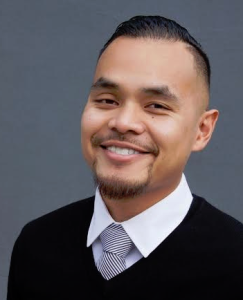 By Gold Chhim
By Gold Chhim
Director of Community Partnerships
Teach for America–Los Angeles
Many in the education community are talking about the need for disaggregated student data – meaning that instead of simply bubbling in Hispanic or African American on school documents, students will have the option to identify as their unique subgroup – be that Mexican or Nigerian. Such disaggregation has significant implications for how we think of diversity within communities of color, and will help us create better support systems to meet the unique needs of individual ethnic subgroups.
For Asian American & Pacific Islander (AAPI) students, who have long been grouped together under the “Asian American” model minority umbrella, disaggregation is necessary to shed light on the realities faced by so many. With more than 48 ethnicities and over 300 spoken languages, the AAPI community is far from universally privileged (as is often concluded) – we see a vast socioeconomic and academic spectrum as befits a community of our size. When we ignore these differences, however, we paint an incomplete narrative that does many of our students a major disservice.
I am a first-generation Cambodian American. My parents lived simple lives in Cambodia before the Cambodian genocide forced them to become refugees. As such, they faced unbelievable atrocities for years as they sought refuge from the unspeakable horrors they witnessed every day. They were forced to abandon everyone and everything they knew in order to pursue an opportunity for their kids to have a life that was better than theirs. There was no guarantee of reaching this “promised land” but turning back was never an option, so they kept pushing forward no matter how heartbreaking or bleak their journey became.
When they emigrated to the eastside of Compton, California, they realized that this new world presented countless unique challenges. They spoke no English and had almost nothing to their name other than the clothes on their back. They also carried the burden of their traumatic experiences, but their PTSD and the fear of being ostracized by their community prevented them from talking about many of these experiences (with us or with anyone else). Instead, they did everything they could to assimilate to their new lives, even if it meant being completely silent about their past.
My parents weren’t alone – there were countless other Cambodian families who didn’t have the support systems they needed to deal with the horrors that they had seen and experienced. For many of my peers and I, this often resulted in unspoken challenges at home and in school – including language barriers, a lack of support with school work and constant bullying (from both Asians and non-Asian peers) because we were seen as the “low-class Asians.”
Because of this I struggled in school, but one wouldn’t know this by looking at my data – because on surveys and tests I simply bubbled in “Asian American.” While my teachers saw me receiving poor grades and getting into fights, they also saw that Asian Americans were high-performing in the aggregate. The data said my people were successful and so we were easy to ignore.
Data disaggregation is the game-changer needed to help our AAPI students. Nationally 35-40 percent of Laotian and Cambodian students do not finish high school, and the Hmong and Marshallese communities experience a poverty rate more than twice the national average. These students require tailored services – from counseling to scholarships to mentorship opportunities, and so much more – to grant them exposure and access to the institutions which so many take for granted.
But schools and districts can’t know to provide these supports when their students only have the option to bubble in “Asian American.” All they see is that in 2012 88 percent of Asian American students graduated high school – compared to 80 percent of all students nationwide. Surely these students are doing fine.
When I led my own classroom in Detroit through Teach For America, I worked hard to ensure none of my students were rendered invisible by the system, regardless of their ethnic background. I’m proud to be part of an organization standing in solidarity with the AAPI community to advocate for student and teacher data disaggregation. Teach For America supports Congressman Mike Honda’s “All Students Count Act,” which would require State Education Agencies to report more enhanced, segmented data at the K-12 levels for their annual state report cards. And we’ve implemented official changes to our corps member application which allow for a more inclusive experience for applicants and improved ethnicity reporting for all of our teachers.
All of our AAPI students deserve to be counted. Data disaggregation helps give them a voice, and in doing so provides educators with the information needed to meet all of our student’s unique needs.

